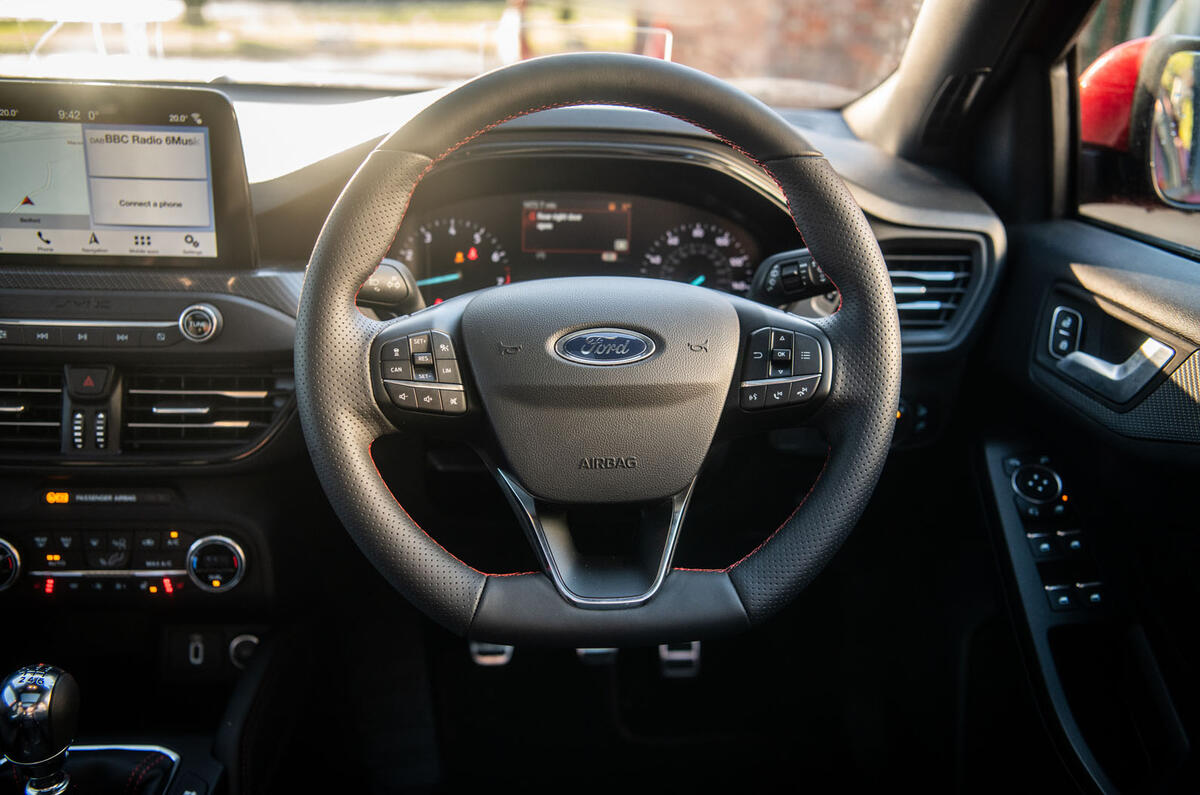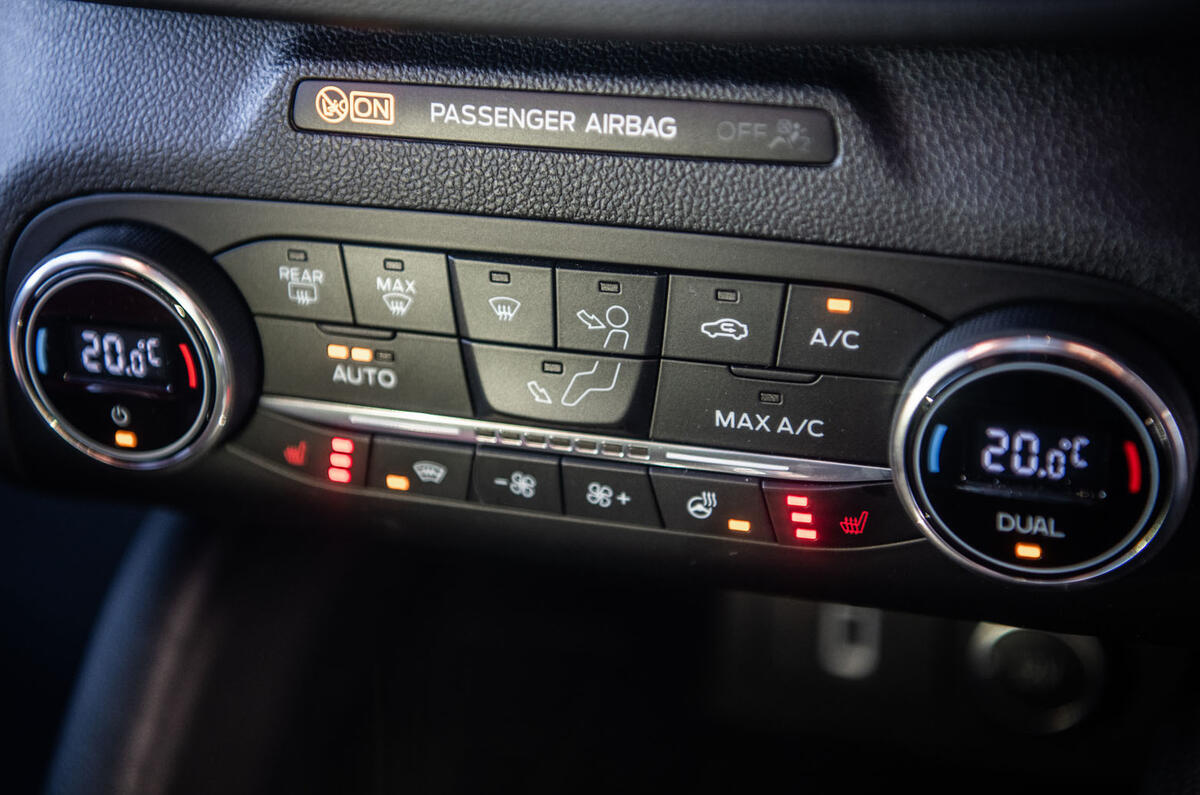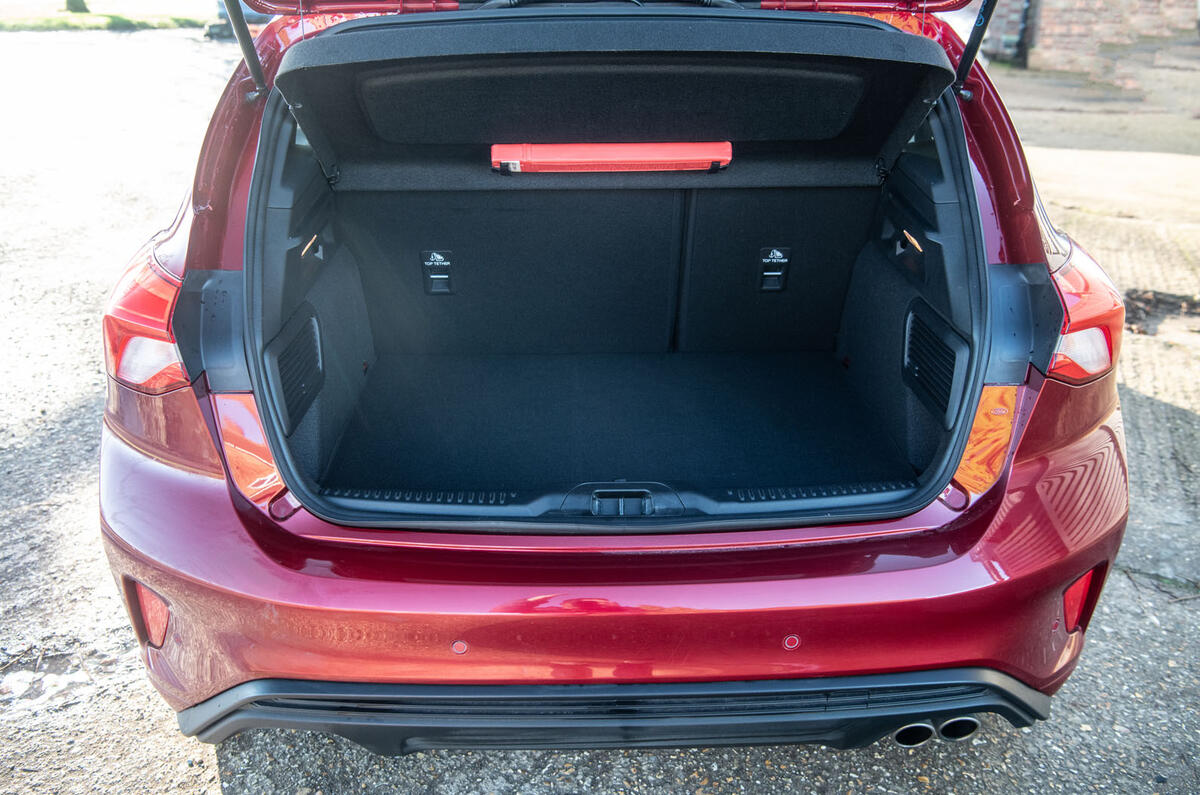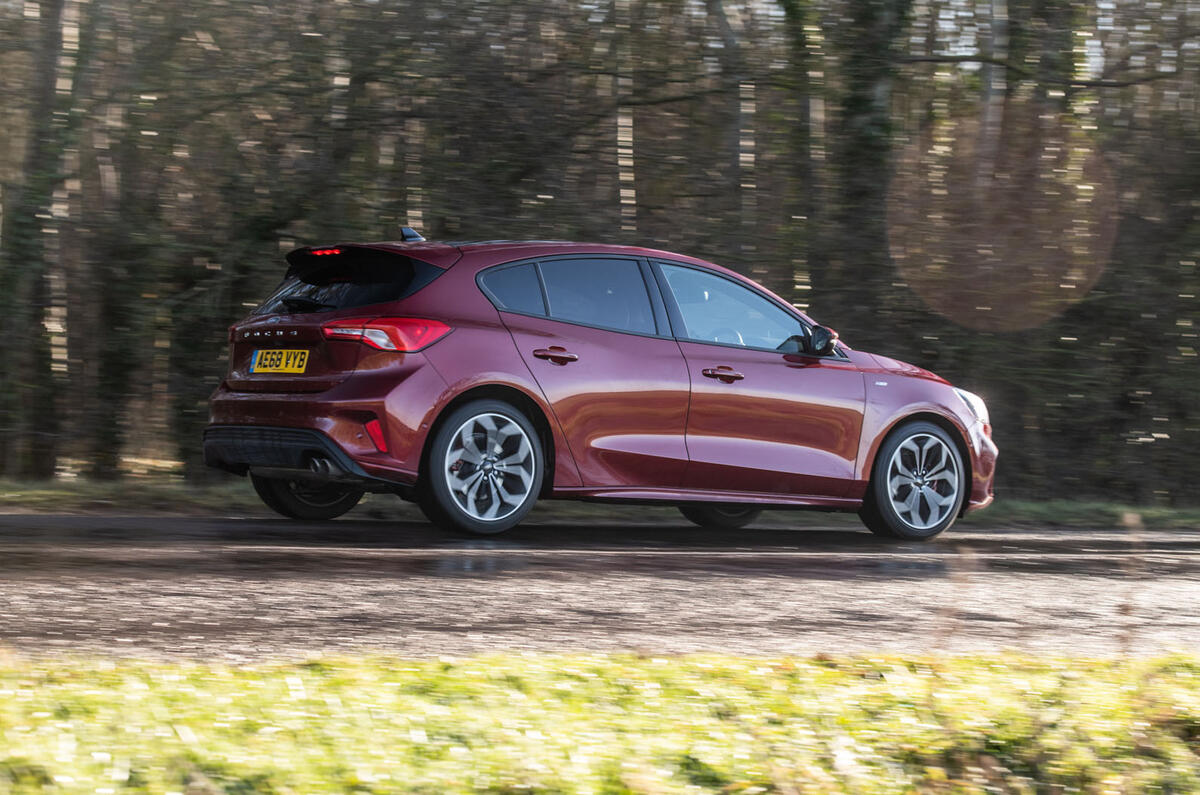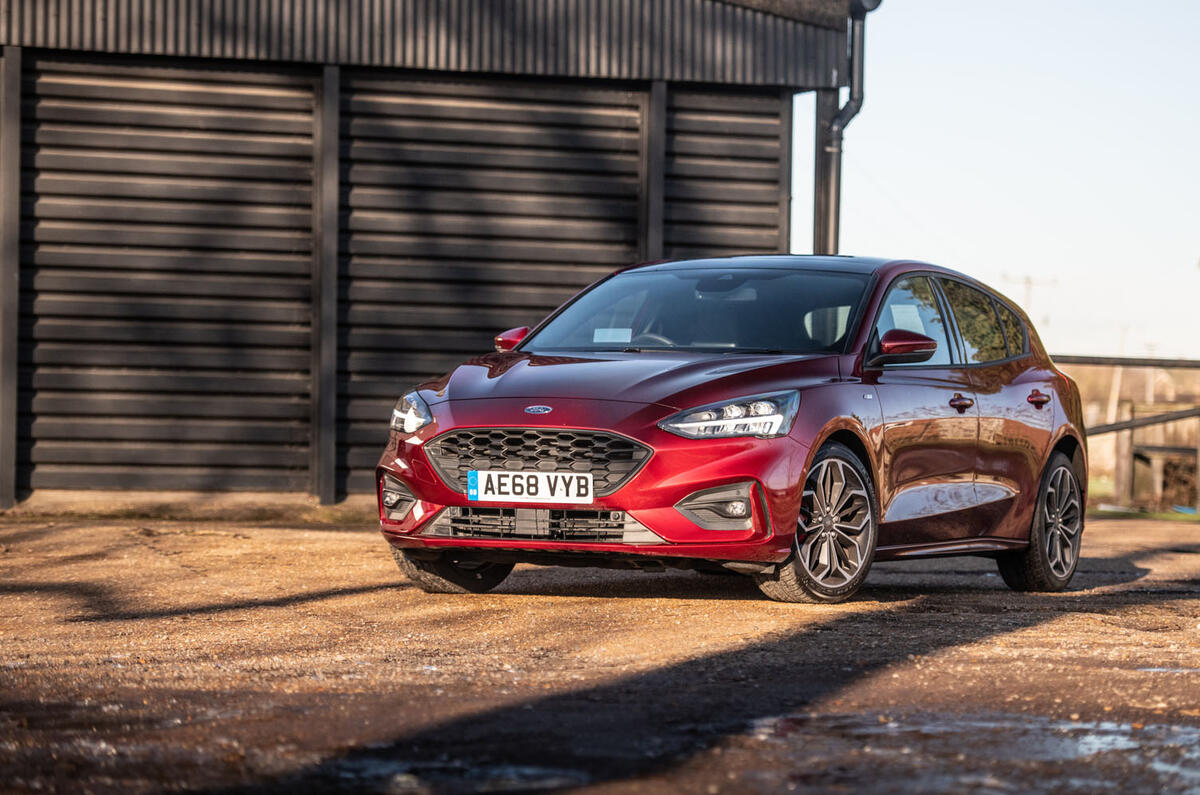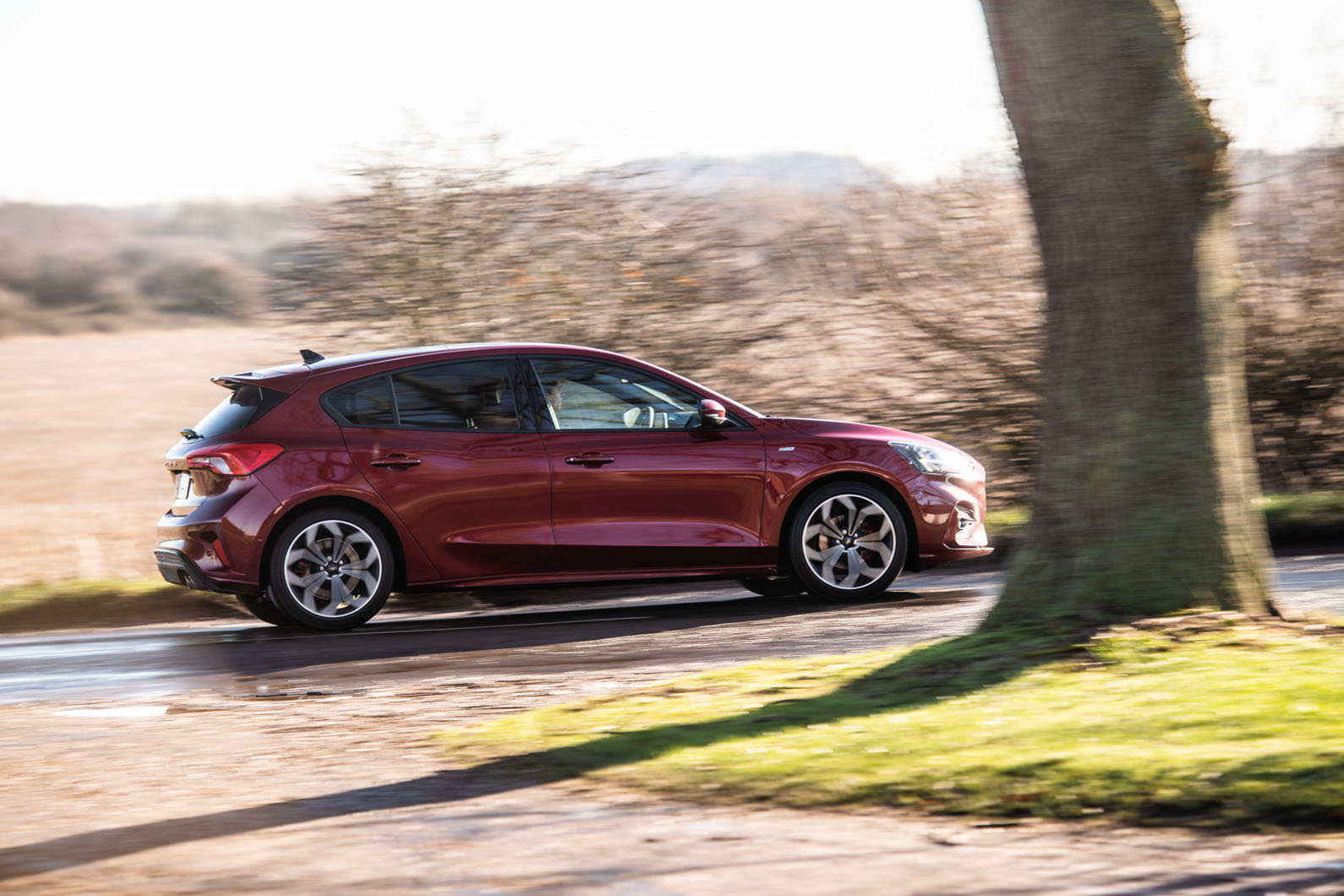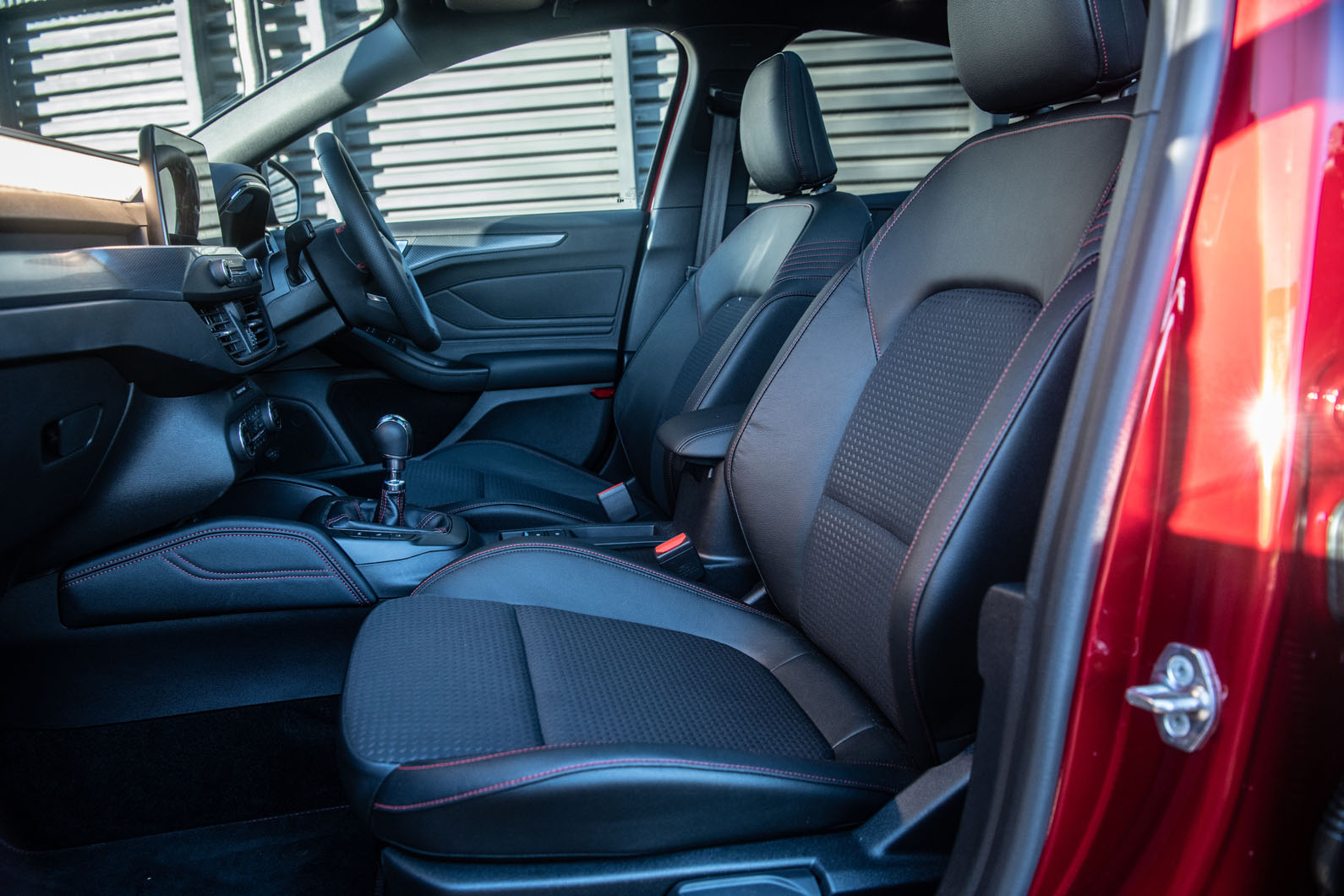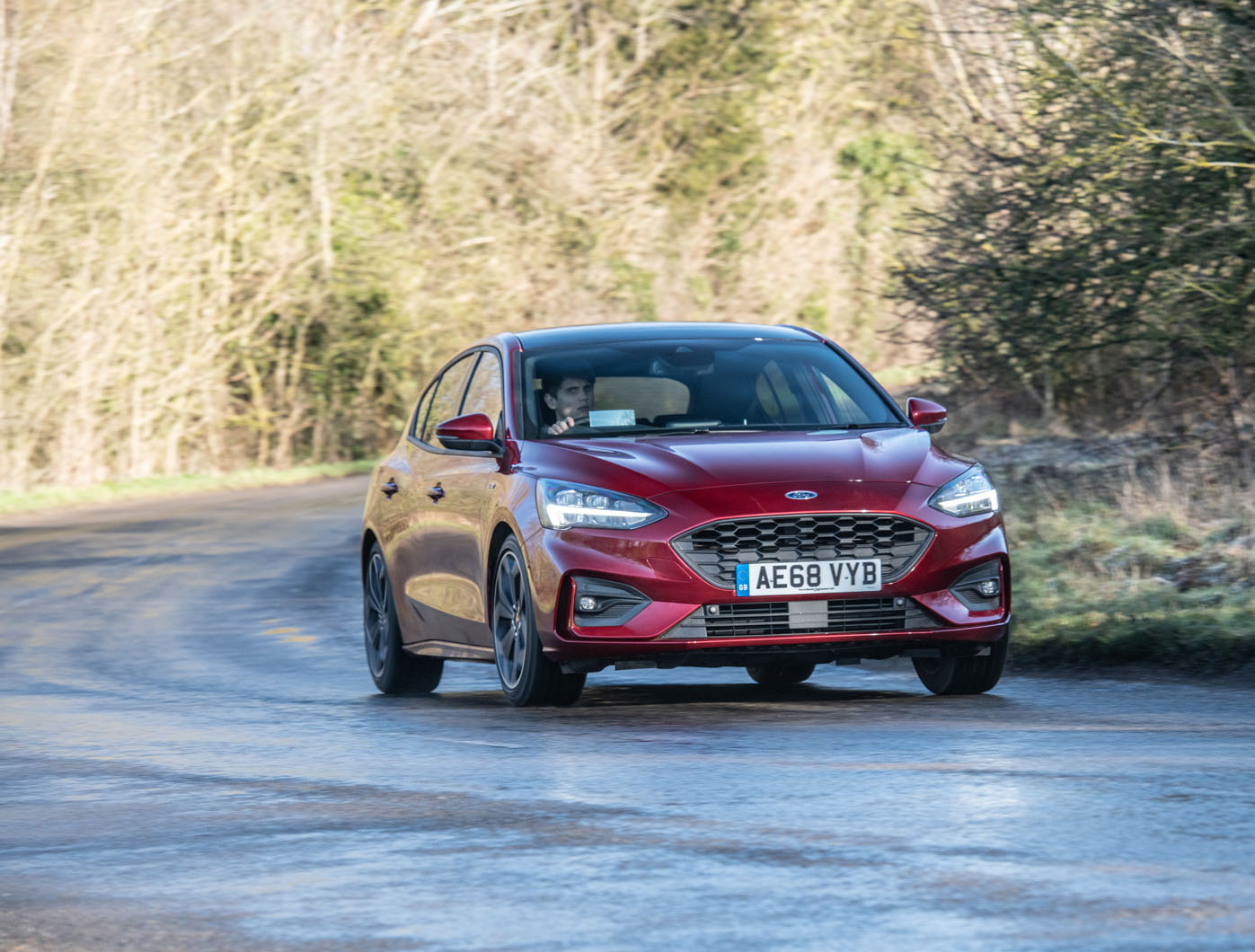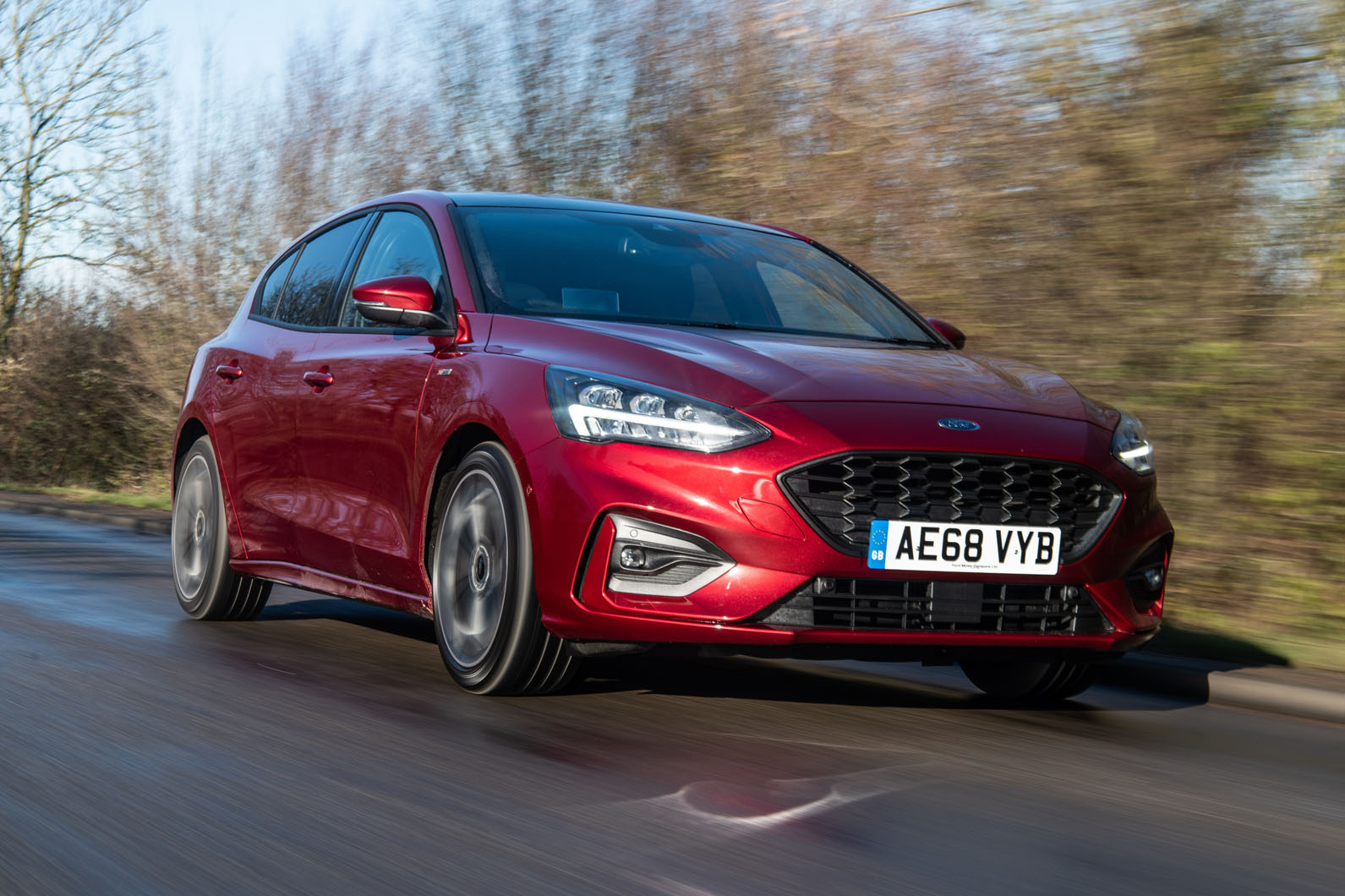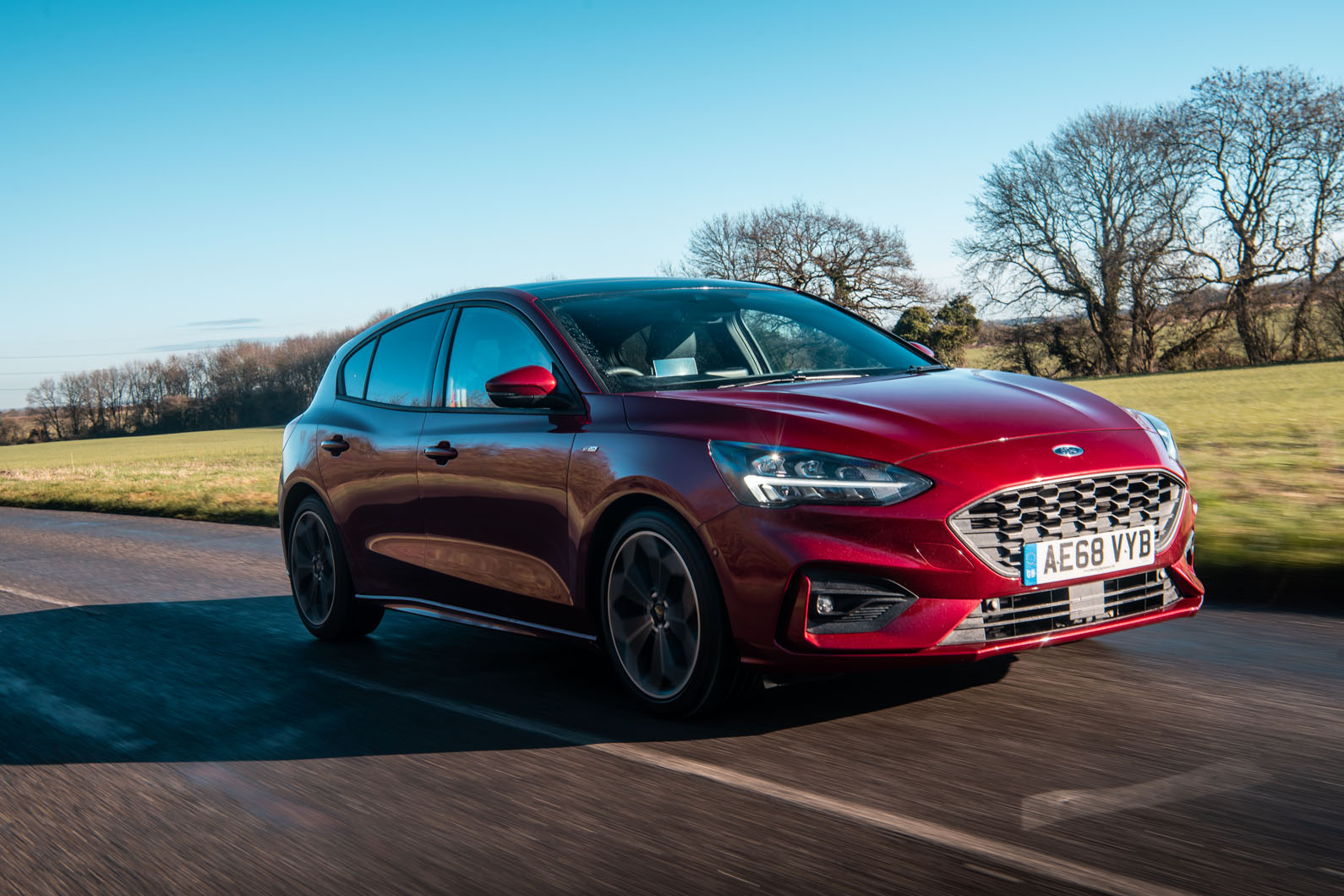Ford’s C2 platform wasn’t only designed to enhance the Focus’s driving dynamics: it has improved practicality too. The wheelbase is now 52mm longer than before (at 2700mm), contributing to a typical rear leg room figure of 700mm. For perspective, its predecessor made do with 660mm, while the Skoda Karoq Scout crossover we road tested earlier this year had 680mm.
Boot space is competitive by the standards of the class, too, if not exactly class-leading. There are typically 375 litres of luggage capacity available in the car to the top of the load cover (341 litres in the case of our test car, because its optional adaptive dampers deny the possibility of a split-level boot floor), which is accessed via a usefully wide aperture that measures 950mm at its narrowest point. By way of comparison, the Volkswagen Golf and Seat Leon – arguably the Focus’s closest competitors in this segment – both have 380-litre boots, while the latest Mazda 3 only manages 295 litres.
The car’s driving position and ergonomics are beyond serious criticism. There’s more than enough adjustability in both the steering column and seat to ensure you don’t find yourself perched awkwardly over the pedals in order to be within reach of the wheel, while the gearlever, physical ventilation controls and central infotainment display are all within easy reach. That the seat base doesn’t allow you to sit quite as low down in the cabin as you might remains a minor bugbear.
The cabin’s abiding plainness and general shortage of sensory appeal is a more serious criticism, though. You can tell Ford has tried to make this ST-Line X model’s interior feel a bit more special than that of its range-mates, but the execution hasn’t been too successful. The car’s ventilation and heated seat controls are physical, and all the easier to use for it than they might have been as functions integrated into the touchscreen console, but they do look a little bit dated.
The faux carbonfibre trim on the car’s fascia, meanwhile, looks half-hearted and tokenistic, and the Focus’s general standard on perceived quality is not quite what it ought to be if Ford plans on continuing to resist the advance of various rivals with one of its key European products.
Entry-level Style models are the only grade of Focus that do without Ford’s 8.0in touchscreen infotainment suite. On lower-spec cars (Zetec, ST-Line), this does not include a factory satellite navigation function, but the inclusion of Apple CarPlay and Android Auto software means you won’t exactly miss it.
Our ST-Line X test car benefits from the full Sync3 suite right out of the box, incorporating DAB radio, sat-nav, Bluetooth, voice control and the aforementioned smartphone mirroring capability.
Generally it’s easy to use, but it lacks the visual sophistication of more premium rivals and perhaps isn’t always quite as intuitive as it could be. The row of shortcut buttons at the bottom of the screen makes it easy to switch between menus, but the absence of a dedicated home button here seems like an oversight.
Provided you have a compatible smartphone, you’ll likely end up using the Focus’s mirroring software as a default operating system most of the time.
















